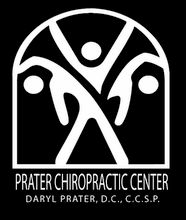
 Stick close to me and you will be safe from the cars!
Stick close to me and you will be safe from the cars!January 19 only 10 runners braved slippery roads to make the trek out to Decatur, but in typical Bob Smola style he made it worthwhile with a post-run spread fit to feed an army, course maps and plentiful aid stations. Thank you Bob for planning a great run and thanks to those who made the trip!
The following Saturday skis would have been more appropriate as runners hit the slopes of R Avenue and ventured into unplowed territories. “Even my Yak Trax are no match for these conditions,” reported Peggy Zeeb. Team Garmin started their run early with a 2 mile add on before the official start. “Todd Raab started even earlier and took to the roads at 5:00 am,” reported marathon wine guru Peter Gower. “When he came back it was discovered he painted snow graffiti all over my car!” Day sponsor Mark Breuer earned extra-special recognition and the "warm hands" award for traveling slick roads to drop hydration. Edie Lane was voted as the owner of the “most stylish yak trax” after showing up in her bright red version.
We would like to extend a warm welcome back to Mark Sherrard! Mark and his wife Molly were KAR members who relocated to Indiana a couple of years ago, and have now transferred back to Kalamazoo. We learned during our adventure that Mark ran an incredible 3:00:35 at last year’s Green Bay Marathon. Here is a little bit of trivia: Mark and Molly Sherrard, Brian Dobbie and Bonnie Sexton all began their “run camping” experiences at the 2003 Borgess Run Camp.
Speaking of Borgess Run Camp, they also began their 13 week “Step Up” adventure at the Borgess Health and Fitness Center this Saturday. “We found the wiki, at http://borgessruncamp.pbwiki.com/ but can't seem to locate this year’s run camp blog,” reported Beyond commander Bonnie Sexton. This is of great concern to us as it will make it very difficult to shield ourselves against any “renegade camp” attacks. Giti Henrie paid a visit to allied SHufflers forces last weekend disquised in a ski mask.
We are happy to report that Julie Steeby arrived home last Saturday and is on the road to recovery. She even made a special guest appearance at the Spirit of the Marathon movie on Thursday with her husband and runner Jon Steeby. The Spirit of the Marathon movie, by the way, was a documentary that rocked and the theater was packed so full additional chairs were pulled in and a few late arrivals who we won't embarrass by naming had to resort to floor seating. Other Beyond participants caught live on the scene were Edie Lane, Karen Spauty, Giti Henrie, Ron Reid, Rich Schau, Jeff Datillo, Karen Arrick, Bonnie Sexton, Vicky Mergen, Peggy Zeeb, Eric Zeeb, Joel Pennington, Brian Dobbie and his wife. According to reports, there were many more Beyond runners not seen, but who were rumored to be on the scene. Get well soon Mark Chicoine! It was great finally meeting Susan Miller!
Here's a bit of trivia for you? Where do all these marathoners lurk when they work? We have representation from many of the major corporations including but not limited to Pfizer, Stryker, National City, Eaton, Duncan Aviation, Special-Lite and Kellogg. Both Bronson and Borgess are represented, as well as several fine educational institutions including Western Michigan University, KVCC, Paw Paw Public Schools, Harper Creek Public Schools, Galesburg-Augusta Public Schools and Colon Public Schools.












